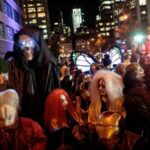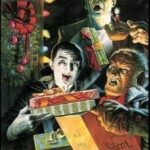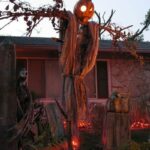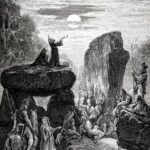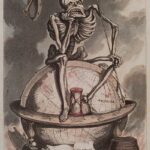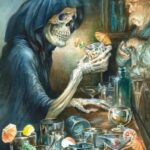Universal
Halloween is celebrated internationally. Unlike Christmas, Easter or Passover, Halloween is not associated with a particular religion. Yet it weaves spirituality, death and religious beliefs into our present and historical imaginations.
Many of Halloween symbols are universal; they are familiar to people in many parts of the world. Yet, each cultural group sees the images from its own perspectives.
- To one group, they symbolize various forms of death: physical and spiritual, scary or affirming.
- To another, they point to the innocuous thrills and fantasy that go with that special time of the year.
- To a third group, they represent genuine evil — the lures of an occult world view manipulated by the Devil. In other words, the meaning depends on a person’s beliefs and world view.
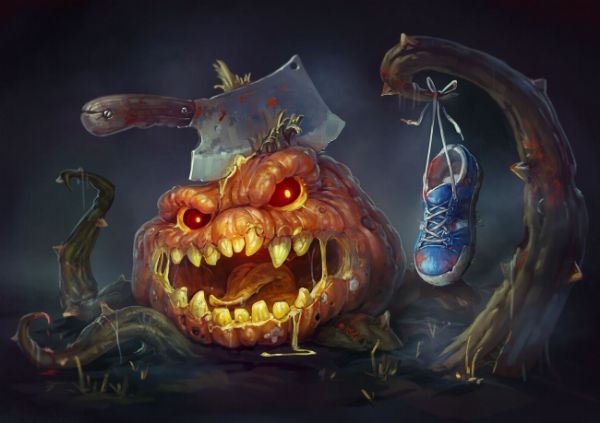
The fear of death
Halloween despite its vicious commercial side remains deeply rooted in the cult of the dead. Connections to death, disorder, endings and to what Western traditions take to be the separate and set-apart world of the spirits all are consistent elements in tales about Halloween’s origin.
Children usually discover the reality meaning of death (as a human archetype) at the age of 5 to 7. Halloween is a way to exorcise the fear of death for both children and adults through rituals such as disguising into monsters and playing pranks. Death as the celebrant in Halloween is seen by the participants as an extraordinary but entertaining spectacle.
The time of the year is ideally chosen. There is a distinct death-and-life sequence in the cycle of seasonal customs. The beginning of winter seems a fitting time to commemorate death – November as the “month of the dead” is dark, drab and dreary, nature has retired and lifeless forms scatter the landscape. Just as traditional spring rituals proclaim the rebirth of nature, the beginning of winter is reminiscent of death.
For a while, we pull these fearful and painful realities into a relatively contained and public context. We share them with our children. We create a special and safe moment during which danger and death, skeletons and strangers can safely be part of our experience. Then we lock our doors again and return to our everyday, normal lives but with the satisfaction of having changing skin.
A ritual of belonging
Nowadays people often don’t know their near neighbors, much less the neighbors a few blocks away. For little children these strange houses and strange people are a source of fear and anxiety. Children have been taught not to trust or talk to strangers, to beware of them.
But on Halloween that prohibition is lifted; and, with fear, but impelled by curiosity and greed for candy and other loot, little ones ring doorbells at houses of strangers to find time and again that these strangers are really friendly people like the people they know well.
In the course of the evening they gain confidence in themselves and in their neighborhood and come away not only with bags full of candy to be enjoyed for weeks after, but also a warm feeling about their neighborhood and people in general.
As for adults, especially the elderly and those who never had children or who haven’t had young children at home for some time, children in the neighborhood are normally a source of anxiety and distrust. What mischief and vandalism might this strange new generation growing up with television violence be capable of?
On Halloween night their fears too are exorcised, as wildly and imaginatively costumed kids parade to the door, a reminder of what they themselves did as children — a common link of experience.
In other words, the true value and importance of Halloween comes not from parading in costumes in front of close friends and family, but from this interchange with strangers, exorcising our fears of strangers, reaffirming our social bond with the people of the neighborhood who we rarely, if ever, see the rest of the year.
Halloween is a time that reconfirms the social bond of a neighborhood (particularly the bond between strangers of different generations) by a ritual act of trade. Children go to lengths to dress up and overcome their fear of strangers in exchange for candy. And adults buy the candy and overcome their distrust of strange children in exchange for the pleasure of seeing their wild outfits and vicariously reliving their own adventures as children.
A ritual of reversal
Days when the living walk around as if dead, and the dead are thought to walk around as if living, are usually associated with rituals of reversal. Anthropologists have analyzed rituals of reversal in settings around the world.
During rituals of inversion, people can violate otherwise solid social codes. Less powerful people can break the rules, reverse the order of expected actions, flaunt otherwise unacceptable ways of dress or behavior or reverse the usual roles of parent-child, boss-worker, male-female.
Thus, it is common to see groups of children “threatening” adults for candy. Everyday people don masks of the famous. Adults dress like children and children like adults. Pranks and mockery ordinarily not allowed become commonplace.
More recently, anthropologists have shown that maintaining the status quo is not the only result of rituals of reversal. The rituals can actually reshape the usual order of things.
For instance, the gay community has actively used the holiday to assert a new and more visible social presence and power. The fantasy elements of masquerade, which temporarily permit one to be virtually whomever he or she wants to be, can foster true personal liberation and change. Playing a Halloween prank on a too-serious boss may change the tone of the office after the holiday.

